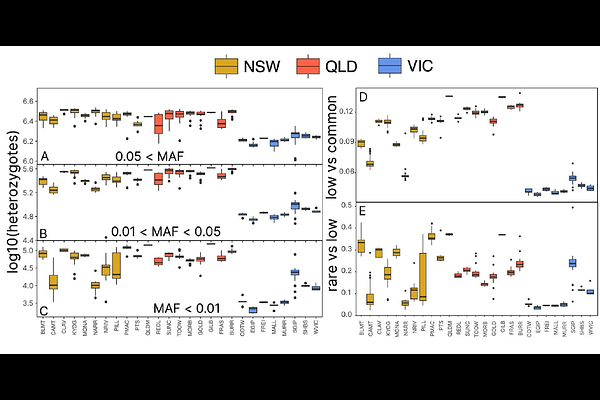Escaping inbreeding: the demographic path to genetic recovery

Escaping inbreeding: the demographic path to genetic recovery
Ahrens, C. W.; Miller, A. D.; Silver, L. W.; Mclennan, E. A.; Hogg, C. J.; Weeks, A. R.
AbstractBottlenecks pose a major threat to species persistence by reducing genetic diversity and increasing inbreeding. Although evolutionary theory suggests these constraints can be overcome, empirical evidence has largely come from invasive species. Here, we analyse whole-genome data from 418 koalas (Phascolarctos cinereus) across 27 populations to reconstruct demographic histories and examine rare genetic variation. We find that northern populations retain higher genetic diversity, while southern populations, despite severe bottlenecks, exhibit larger and increasing effective population sizes (Ne). This apparent contradiction is explained by increased reshuffling of genetic variation through recombination, and the accumulation of rare alleles during recent demographic expansion. Our findings demonstrate that rapid population growth can substantially elevate Ne, offering an evolutionary pathway by which threatened populations may escape the genetic risks of inbreeding.